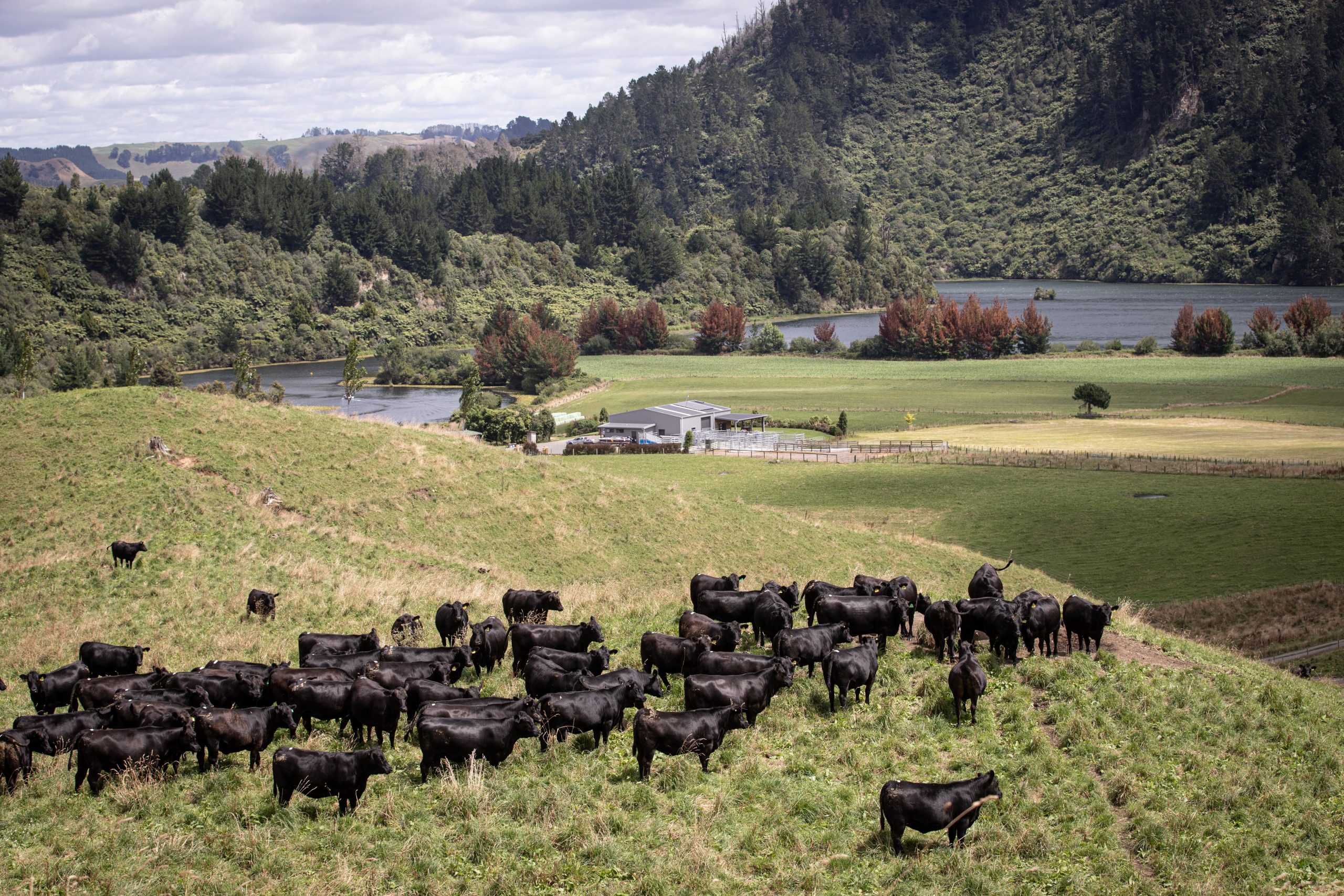Milestones reached in Informing New Zealand Beef programme
Data from commercial herds contribute to beef evaluation programme. Words Sandra Taylor, Beef + Lamb New Zealand

As the Beef + Lamb New Zealand-led seven-year Informing New Zealand Beef (INZB) programme hits the halfway mark, the focus is changing to education and extension and encouraging the use of high-quality genetics in the beef industry.
B+LNZ’s General Manager of Farming Excellence Dan Brier, says over the past four years, the programme’s focus has been on collecting data from the Across-breed Progeny Tests and Next Generation herds, and gaining a better understanding of farmer and industry needs.
This data will be instrumental in the development of NZ-specific breeding indexes, which will be one of the significant outcomes of INZB.
Ultimately, INZB, which is a partnership between B+LNZ, the Ministry for Primary Industries and the New Zealand Meat Board, aims to boost the sector’s profits by $460m over the next 25 years.
Developing New Zealand specific breeding indexes
In a step towards developing Estimated Breeding Values for NZ’s beef industry, B+LNZ Genetics Specialists, Dr Jason Archer and Anna Boyd, have been running workshops in the North and South Island to give beef breeders the tools to measure beef cow Body Condition Score and assign teat and udder scores.
Anna says Body Condition Score (BCS) and udder and teat conformation were identified as being important to beef farmers through the industry-wide Trait Prioritisation Survey carried out in the early stages of the programme. “We considered these to be low hanging fruit as they are easy to record and inexpensive to measure on farm. They are also moderately heritable.”
She says teat and udder (in particular) are two important functional traits, as they have a direct impact on beef cow productivity. Poor udder suspension and teat size can result in an increased chance of injury, increase the risk of mastitis and decrease calf growth rates.
The workshops also included a practical component on Body Condition Scoring to encourage farmers to move away from using EBVs for rib and rump fat depth collected on young animals as an indication of body condition on mature cows. “We know that farmers use rib and rump fat as a proxy EBV for BCS, but from our Progeny Test data we also know that they are a crude tool to improve body condition. In fact, there is only a 25% correlation between the fat measures and BCS,” says Anna.
Instead, they would like to see farmers able to select directly on cow BCS by developing a BCS EBV. This EBV would be based on condition scores collected using the NZ-standard BCS scale of one to 10, which is also used by the NZ dairy industry. “We are encouraging consistency although we know it’s not always easy, it requires experience and confidence.”
Performance Beef Breeders will collect data from breeders and this will be used by INZB in the development of a genetic evaluation system.
Building a genetic evaluation and data infrastructure
The development of a genetic evaluation and data infrastructure is well underway and a prototype of nProve for beef was delivered at the end of 2023. Leveraging off the experience and skills gained during the development and launch of nProve for sheep, the team at B+LNZ Genetics are working closely with breed associations and industry organisations to ensure the tool will meet the specific needs of our beef industry.
Running Progeny Test herds
Now in its fourth year, Beef + Lamb New Zealand’s across-breed Beef Progeny Test continues to gain momentum with over 50 bulls (Angus, Hereford and Simmental) being nominated as sires for use in the 2023-mating season. This was the highest number of bull nominations since the across-breed Beef Progeny Test (BPT) was launched in 2020.
The test, which compares bulls under commercial farming conditions, is being run on Pāmu’s Kepler Farm in Manapouri and at Lochinver Station near Taupo. Data is collected from conception throughout the animal’s life. The test now has processing data from calves born into the programme, and reproductive data
from heifers born in 2021.
On Kepler farm, Angus and Hereford cows are run side-by-side with crosses undertaken both ways. Simmental sires have been added to the mix on Lochinver Station, while the same Angus and Hereford bulls used at Kepler are also used at Lochinver. A commercial herd programme is also linking Shorthorn data into the Progeny Test data.
Next Generation herds
Commercial beef farmers play an important role in INZB through Next Generation herds. These are farmers who have an interest in genetics and are wanting to assess their bull team’s performance, have more accurate information for selecting heifer replacements and are willing to work with their bull breeders to speed genetic gain. This typically, but not necessarily, involves using artificial insemination to create direct genetic linkages.
To date, 21 farmers have come onboard on the programme, with 15 more joining this year.
While Next Generation farmers don’t need to weigh calves at birth, they do need to scan cows to get accurate foetal age information, DNA test their calves, measure growth rates, cow Body Condition Score and reproductive performance.
They are rewarded with a wealth of data which they can use to improve the productivity and profitability of their commercial beef herds.
Educational focus
There will be a strong educational focus in the second half of INZB, building on a Beef Breeder Forum which was held in 2023 and a breeder study tour to North America.
Twenty-two Better Beef Breeding workshops are planned for 2024, an online learning module is available on B+LNZ’s Knowledge Hub along with how-to videos of carrying out a Structural Assessment on bulls and Body Condition Scoring beef cows. Other resources developed include Body Condition Score cards.
To find out more visit blnzgenetics.com/informing-nz-beef.




